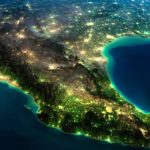BBVA shows how Big Data can boost tourism in Mexico
BBVA Bancomer and the Mexico’s Ministry of Tourism (SECTUR) have presented a pioneering big data application that identifies trends and productivity in the country’s tourism destinations.

The report, titled “Big Data and Tourism”, was written by BBVA Data & Analytics in the bank’s Center for Excellence in Data Analysis and will help Mexican authorities design public policies to boost orderly growth in the Mexican tourism industry, which accounts for 8.7% of GDP.
During the first stage, the project gathered information on the trends registered by 86 million national and foreign bank cardholders over a one-year period in 12 statistical areas that cover the 111 Magic Towns of Mexico and the main tourist areas in the country. Of these, 20 million are BBVA Bancomer customers. In one year, 1.5 billion transactions were made, totaling 813 billion Mexican pesos. The project was developed with strict adherence to data protection and the privacy rights of financial service users.
The study
The massive adoption of big-data technology means that cardholders now generate regular information about their locations. BBVA Bancomer, BBVA Data & Analytics, and SECTUR then collaborated to extract and analyze massive amounts of data to understand the activity in a given area. This analysis, which was done by studying the digital footprint of the visitors, allows the bank to know, for example, that Cancun mainly attracts visitors from the United States and Argentina, while in Cozumel, Mexicans mostly spend money on restaurants and travel.
While the data came from BBVA Bancomer, the analytical tools, the results, and the statistical and geographical visualizations were provided by BBVA Data & Analytics.
The information used for this analysis comes from the activity of 100% of BBVA Bancomer’s national credit and debit cardholders who visited and made offline electronic payments in 2014 and 2015, as well as the activity registered by international users who made at least one transaction in a BBVA Bancomer point-of-sale terminal in the second half of 2015. The study used anonymous data and results are expressed in aggregate terms. This is the first time this type of analysis has been performed in Mexico, where the information from the financial sector is analyzed and monitored digitally.
While the data came from BBVA Bancomer, the analytical tools, the results, and the statistical and geographical visualizations were provided by BBVA Data & Analytics. Mexico’s Ministry of Tourism hired experts to interpret the statistics and prepare the study’s findings. The main conclusions were:
- Spending by international tourists concentrated in Playa del Carmen, an area that accounts for around 35% of the total spending by these types of visitors. National tourists spent more in Cancun and Playa del Carmen, representing around 25% and 27% of the spending during their visits, respectively.
- National tourists used their credit cards mostly for trips or excursions. The international tourists used their cards mostly for entertainment.
- In most of the Magic Towns analyzed, tourists spent the largest percentage of their money on restaurants, food, entertainment, and travel, while in Comitán (Chiapas), they spent a good deal on the automotive category, such as cars, accessories, and mechanics.
- In Cancun and Playa del Carmen, spending seems to be concentrated on Fridays and Saturdays and is more stable during the week. On Isla Mujeres and Cozumel, spending is concentrated in the mornings and drops off on weekdays.
- The highest percentage of spending is generated by U.S. tourists, followed by visitors from Argentina.
Tourism companies can use this study’s results to offer better service during peak spending hours, which is not easy to do through traditional surveys. For example, they can anticipate the movements made by visitors to islands and the spending distribution according to the time of day.
This study once again shows that monitoring tourists’ actual spending is a useful tool for shaping a territory’s production structure and the changes and trends that affect the tourism sector, with the ultimate goal of implementing policies that promote and improve the country’s tourist destinations.
Learn more about the study here.